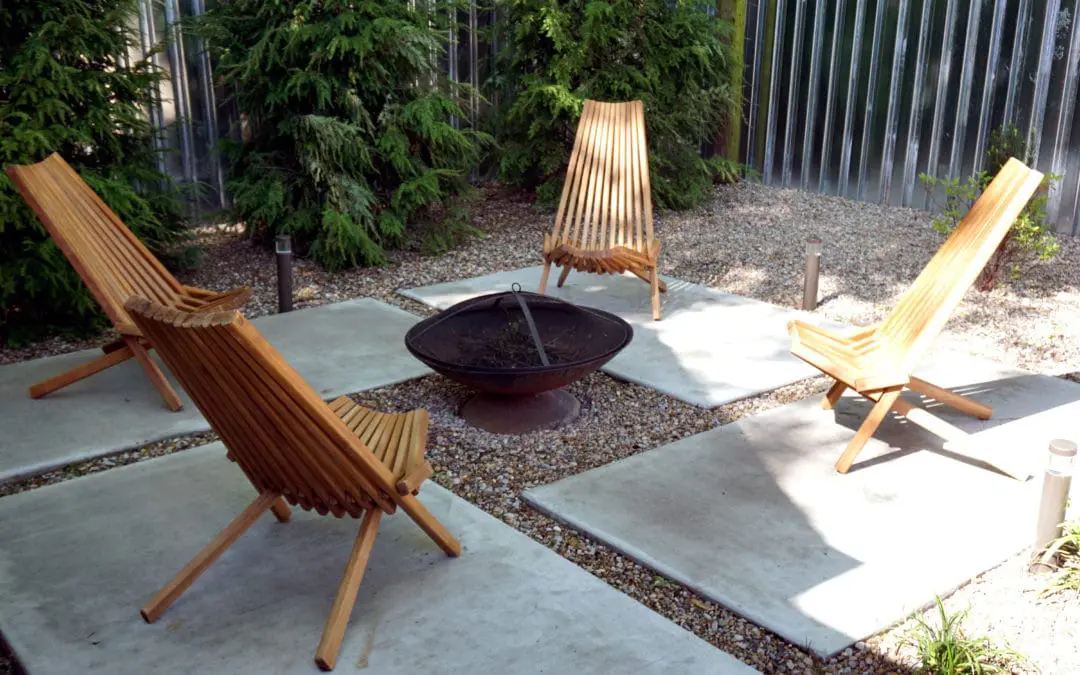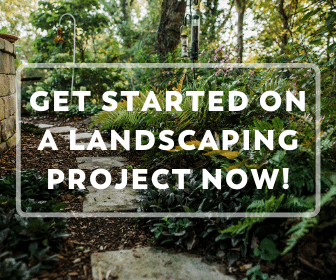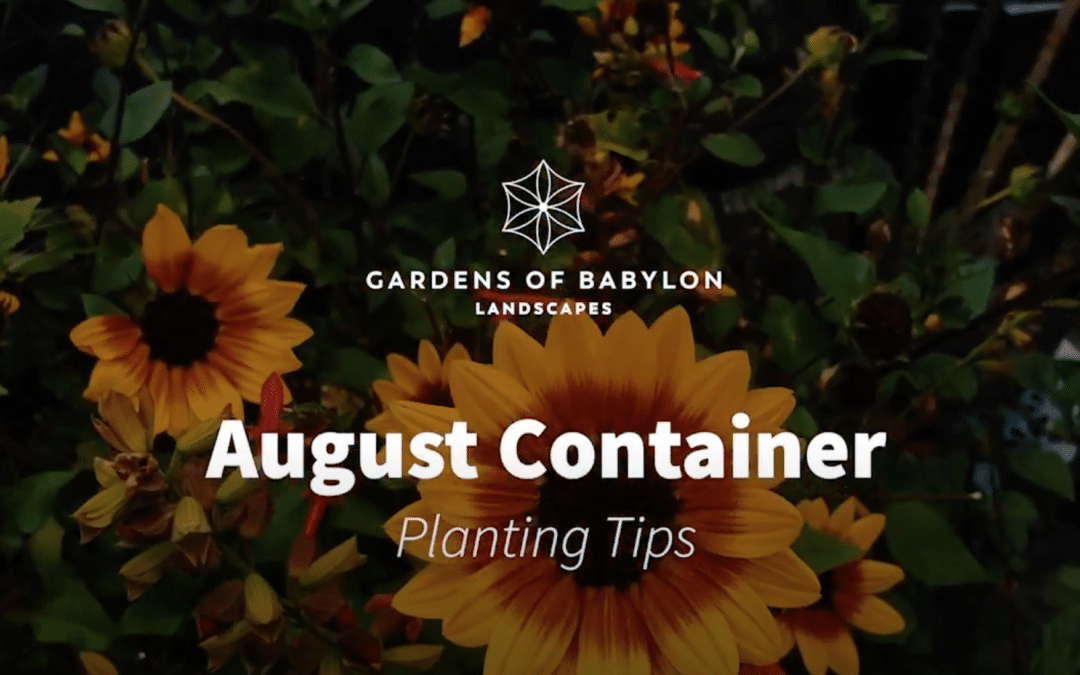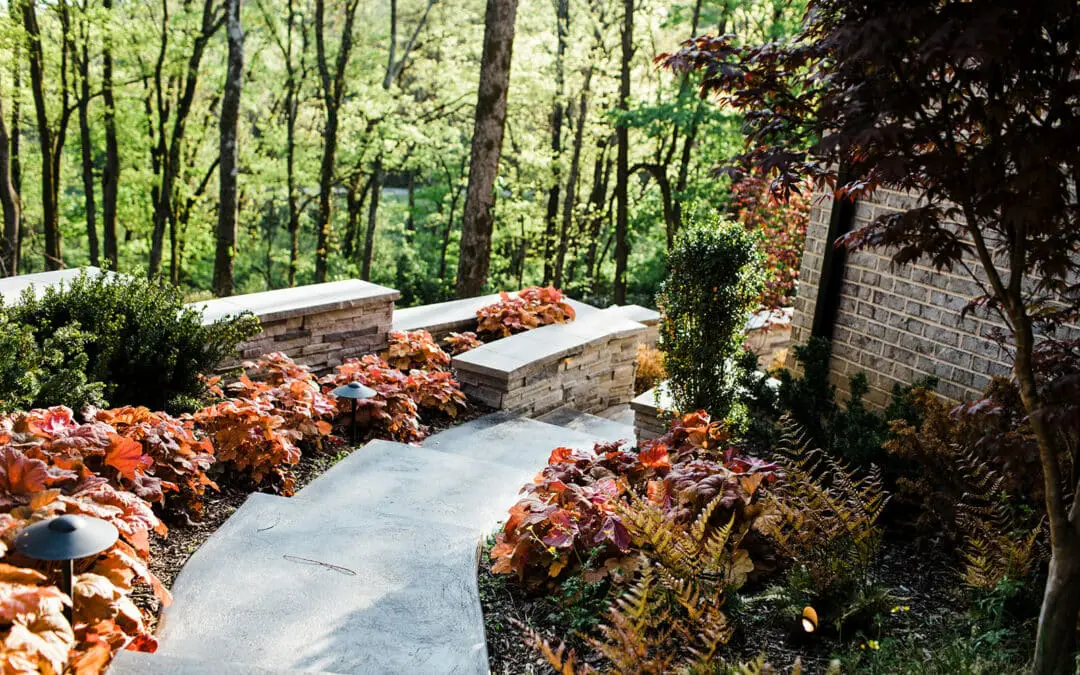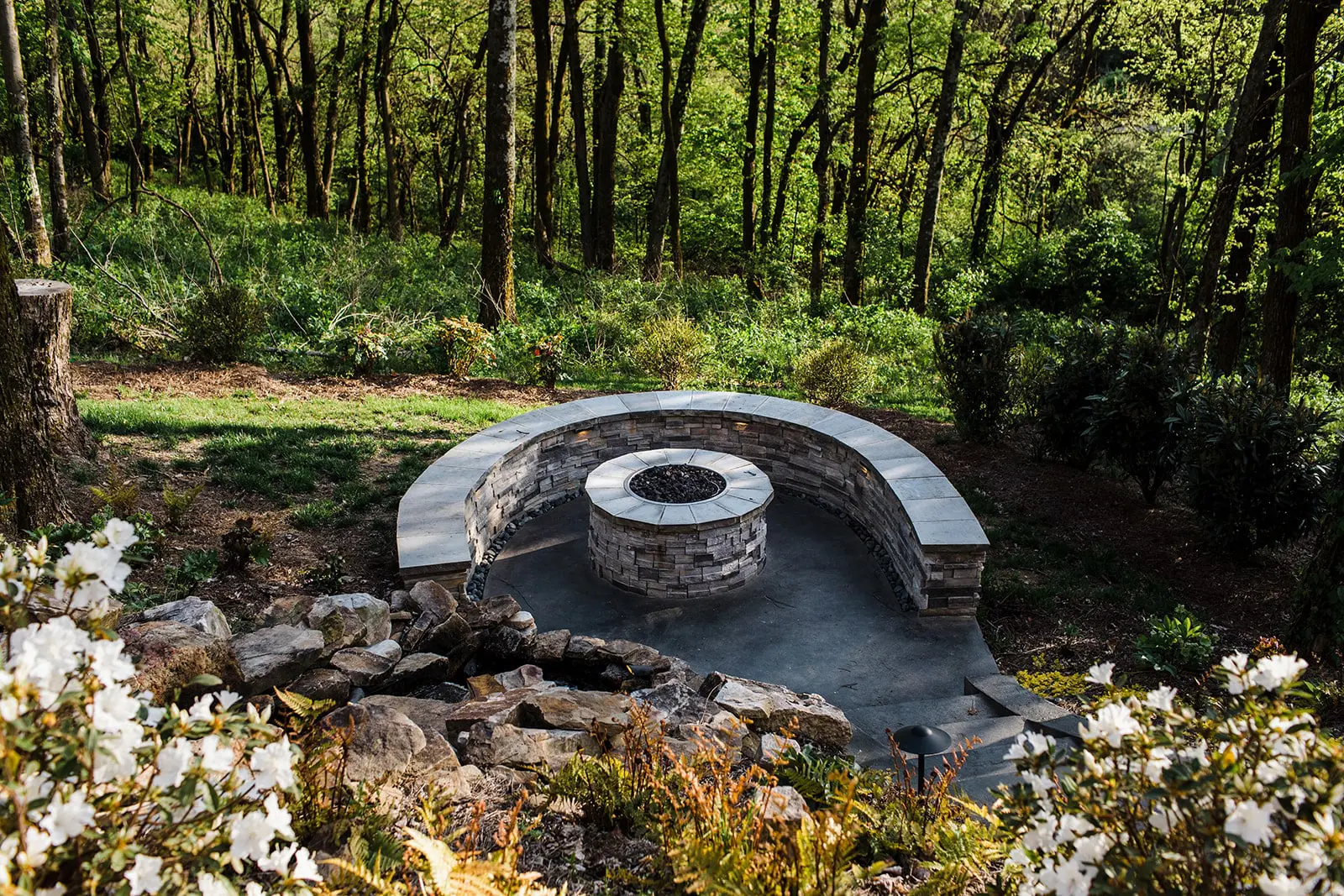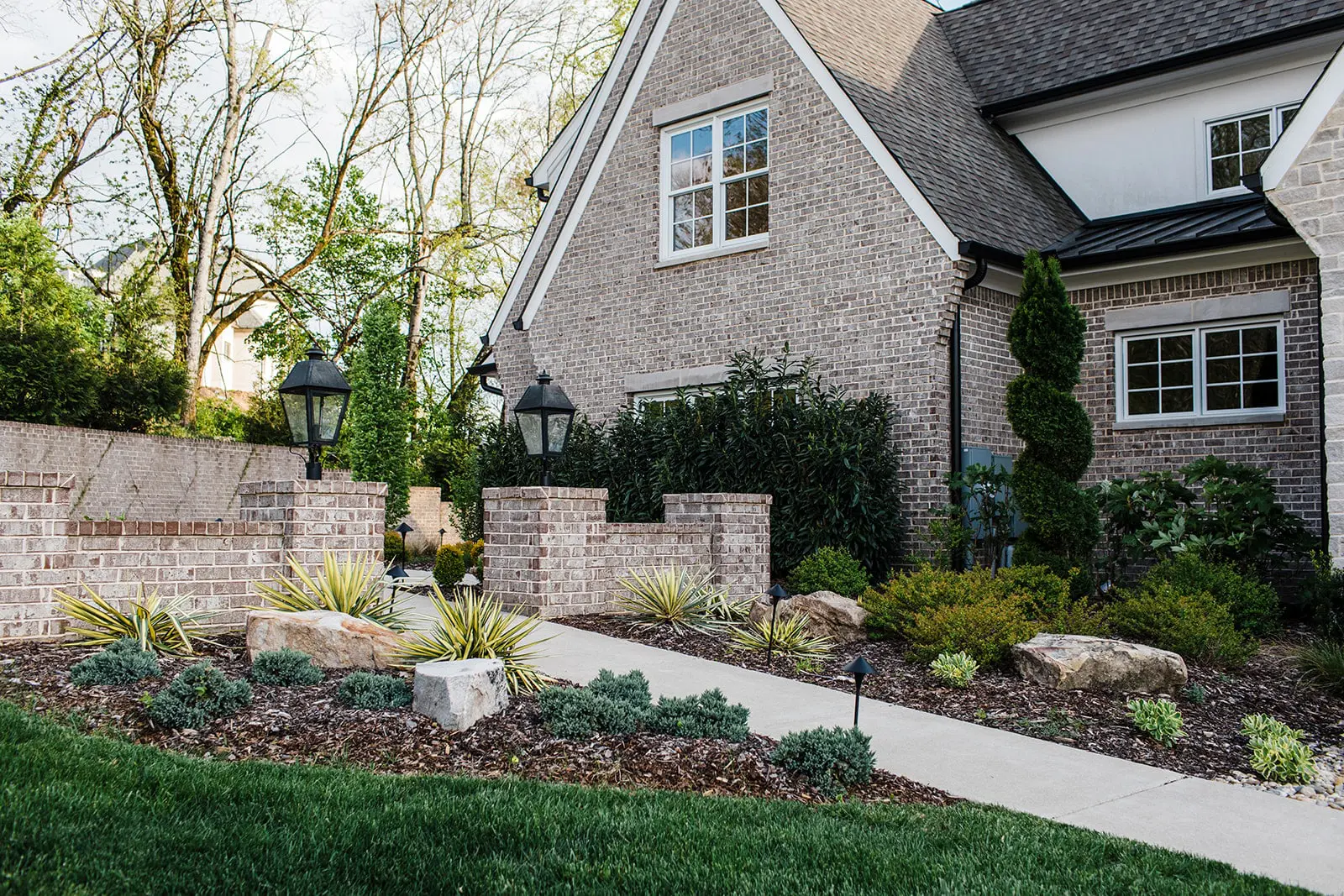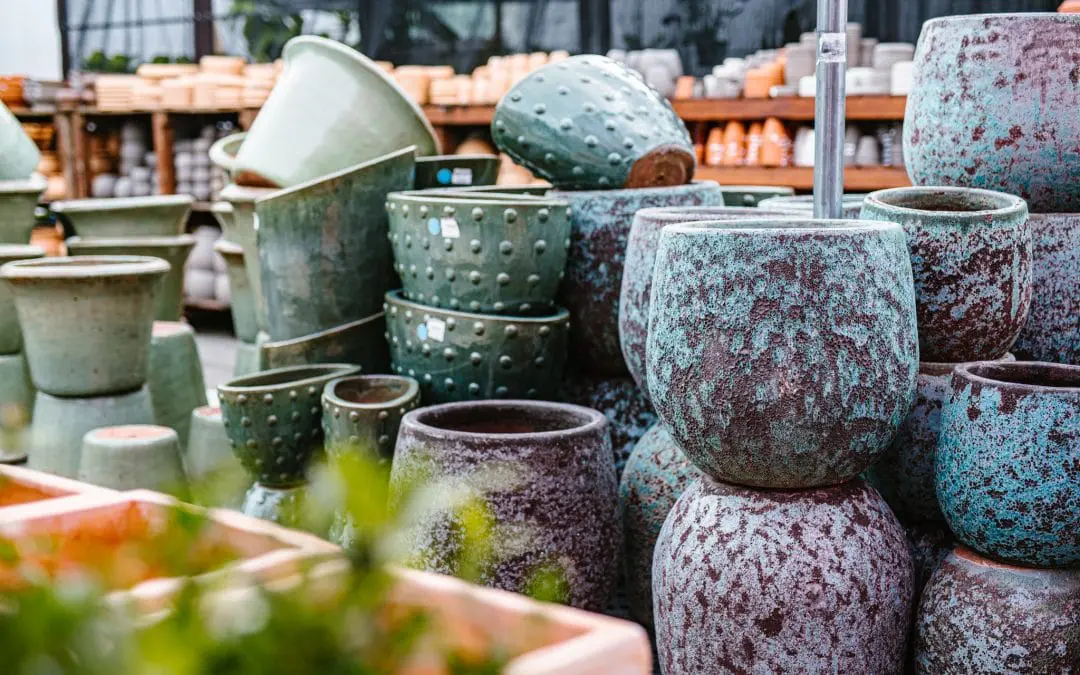
by Gloria Ballard | Aug 5, 2022
Fall is coming, and we can expect chilly nights soon. But wouldn’t it be great if you could still gather with family and friends out on the patio for a relaxing evening outdoors? Consider the warmth and congeniality a firepit on your patio or an outdoor fireplace can provide.
“Especially during this time of the pandemic, it’s a good way to get outside without going anywhere,” says Gardens of Babylon landscape architect Ryan Fogarty. While most of us no longer need open fires for cooking (except, possibly, for making s’mores), time with friends around a fire can warm the air and the heart.
As the weather cools, a crackling fire on the patio can extend the time you can be outdoors. “It’s a great way to enjoy being out in the yard,” Fogarty says. “It’s like a little retreat.”
Stylish additions
For outdoor entertaining, family gatherings, casual dinners on the patio, a firepit can be the element that brings people together. In an outdoor room, a fireplace can make the space comfortable even when the weather is cold.
“We have definitely seen an uptick this year with people requesting a firepit built into design plans,” Fogarty says. “It’s a cool experience in nature. Like going camping without going camping.”
Style choices run the gamut, from rustic stacked stones to designs that are sleek and modern, or anything in between.
Design and build
A typical firepit for Gardens of Babylon clients may be circular or square, usually 18 inches tall or a little taller. The width depends on the scale of the design, but it’s typically 36 or 42 inches wide or wider, Fogarty says. It may be built of wall block veneer and capstones, but can be any suitable material that may reflect the style of the landscape and the homeowner.
“If it’s in a patio, we build the patio around it,” Fogarty says. In a wood-burning firepit, the logs sit atop fire bricks flush with the ground. Gas firepits are also available. The gas company taps into the home’s gas line and attaches a fireplace insert, and the building crew builds a wall block or other veneer around the insert to hide it, Fogarty explains.
Questions to ask:
Here are some questions to consider when you include a firepit or fireplace in your landscape design:
- How and when you will use it? It is for entertaining large groups or small gatherings? Maybe it’s just for the two of you.
- Do you want wood-burning or gas-fired?
- How large should it be? Is a small firepit big enough? Is a massive fireplace too large?
- What is your style: rustic? Sleek and modern? Something in between?
- What type of seating will be placed around or nearby?
- If a firepit is to be installed in a patio, is there enough space to accommodate it?
- Should the firepit design include an additional wall for seating? “A firepit with a seat wall takes a lot of space,” Fogarty says. Maybe you’d rather have it out in your yard.”
A fireplace has an extra set of considerations. “The majority of fireplaces we have worked on have been a kit, and we veneer it with a brick or other natural veneer that the homeowner wants, Fogarty says. “A fireplace also requires a chimney flue and the insert, which comes with the kit.”
“For homeowners with kids it’s good for getting outside and sitting around,” she adds. And those marshmallows melting over the firepit for s’mores are something even the kids will enjoy.

To discuss ways to include a firepit or fireplace in your landscape design plans, book a consultation with a Gardens of Babylon landscape design team professional here.

by Dan Hoy | Aug 4, 2022
Hey, my name is Dana with Gardens of Babylon and today we’re going to talk about August container planting and I’m going to give you some tips and tricks.
All right so for August containers this is a transition month, we’re moving out of summer into fall and so our containers have been really going strong all season long and this is the time to just sort of look and see what’s going on, like can we salvage anything do we need to get our pruners out and maybe tidy up a little bit and deadhead.
Tidying up and deadheading the containers
This container actually looks amazing you can see the lavender is just really flush and the Lantana. I do see this is very common so this cute these coral bells we’re just gonna do a little bit of deadheading. You don’t have to go all the way down to the base, I just want to sort of tidy up a little bit and get anything that’s kind of got its thing out. So that’s the first step for your containers.
So now that we’ve sort of tidied up a little bit we’re going to look and see if there’s any dead spots is there anything that we could sort of liven up a little bit. Some containers you will have to pull some things out because they’ve just sort of done their thing for the season.
Transition Plants: Summer to Fall
But these are some great transition pieces. This is a Snapdragon it’s a great transitional piece because it takes still our hot summer heat and it will actually transition into fall and take some frost so this is perfect. I feel like we’ve got a little bit of a bare spot so i will come in and just tuck in this color right here it’s going to be perfect.
Most people don’t realize that Lantana does take a little bit of cold as well. So another fun idea other than Snapdragons is we, I love to use vegetables in my fall containers. This is a Chard it’s a bright lights chard and you can see it’s multi the different plants they’re going to be like yellows and bright reds. So this would be another thing to pop in and this is going to grow up and give you some color as it starts to turn cold and you can eat it which is amazing.
Succulents are also a an idea to add because this is still drought hot and you want to have things that are going to take that drought in that heat that’s not going to require so much watering.
August is a fertilizing month
August is a time to fertilize, fertilize and fertilize because your pods have been going strong all season long and so it’s time to sort of give them a little bit of a rejuvenation. I either love to use like a good organic fertilizer liquid organic fertilizers are amazing and actually just spill it onto the foliage because right away that fertilizer if it’s liquid will go straight into the plant and work straight away.
Another thing we’re going to talk about is how to sort of amend the soil on top let’s talk about that next. All right so in August we don’t necessarily have to go in and take out soil and add new soil what i like to do is called top dressing.
So i just love to use a natural soil conditioner it’s a cross between a really fine mulch and almost could be soil and it decomposes very very quickly because it’s very fine. I love to use soil conditioner and i like to just put it on the top of the soil in and around all of my containers this time of year.
All right so this is it for august container planting tips the main thing is just have fun if you need to add some new things find things that spark joy for you it’s the little things in life.

by Gloria Ballard | Apr 15, 2022
With an acre or more of land, there was plenty of space in the backyard of this Williamson County home, and the homeowners had hoped to be able to entertain family and friends there. The problem was, most of the backyard was inaccessible. We talked with Gardens of Babylon landscape designer Eric VanGrinsven to learn how he took on the challenge and turned it into the best feature of the property.
What did the homeowner want?
“The homeowner request was a gathering space with seating, lush plantings, and a fire pit area,” VanGrinsven says. The front area was already beautifully landscaped, he explains, but the back, with a dramatically steep grade descending into the woods, was “a blank slate.”
The level area behind the screened porch was not large enough to accommodate a seating area with a firepit. Expanding the area would have required a massive retaining wall, which was cost-prohibitive. “That’s when the idea of a secondary gathering space in the woods came into play,” the designer says. “We decided to use the space below, and figure out how to tie those two spaces together.

What was the biggest challenge?
“The biggest challenge was the access. It was extremely difficult to get into the backyard, and the site was very unforgiving,” VanGrinsven says. “Back in the woods, there are so many trees we really couldn’t build anything of substance. That steep grade wouldn’t accommodate it.”
A walkway led from the main level to what the designer described as a “staircase to nowhere,” which was the access to the wooded backyard. The new landscape design called for a patio off the screened porch with a seat wall, and down below, a second patio area with a firepit and a seat wall under the canopy of trees.
“It’s an outdoor room with overhead cover, but not invasive into the woods,” VanGrinsven says. A walkway to the driveway and staircase down to that new, tree-shaded outdoor room connects the two spaces.

What do you think is the best feature?
“The best feature is the firepit immersed in the woods,” the designer says. “It really is a cool feature, to walk down the stairs to the fire pit area under the tree canopy.”
The area is landscaped and planted with a variety of shade-tolerant shrubs and perennials: visitors walk down the stairway to the firepit patio among ferns and heucheras, azaleas, yews and hollies. To keep the grade from washing, the design called for “the more prolific groundcovers,” such as creeping Jenny, to secure the slope.
“We had to keep things closer to the house for logistical reasons, but in the end, we were able to strike a nice balance of usable space in a very difficult site,” VanGrinsven says.

The Gardens of Babylon landscape design team is ready to solve any difficult problems in your landscape. Click here to book a phone consultation with a member of the design team.

by Gloria Ballard | Mar 16, 2022
Even if you don’t have a personal patch of soil, you can still have a garden. If you have space to plant a garden in the ground, you also want to enhance your porch, patio or deck. That’s the advantage and beauty of container gardening.
But how do you choose the best container for the job? It depends on what you want it to do – fill a nook on your small balcony? Grow a tree on your patio? There’s a pot for every purpose.
Choose your size
Any living thing needs room to grow, so you’ll want a container that provides enough space for roots to spread in the soil. A general rule for a single plant or shrub is to choose a pot that is roughly twice the size of the root ball of the plant you’ll put in it. If it’s too small, the plant’s roots will quickly fill it up; if it’s too large, the roots may struggle to reach the moisture they need, and admit it, a small plant looks awkward in a big, spacious expanse of pot and soil.
Size also depends on whether you’re potting up that single plant, or a container garden with a mix of annuals, perennials or herbs. For an attractive mix, you want a container that is proportionate to the size of the little garden as it matures, and that still provides enough room in the soil for each plant’s roots to absorb the nutrients it needs.
Whatever size is selected, make sure it has a hole to allow water to drain through. Most plants that sit in waterlogged soil will struggle, and likely not survive.
Choose your style
If the look you prefer to cultivate in your space is buttoned-up formal, of course you’ll choose a container that reflects that style – possibly with clean, crisp lines and colors and shapes that match the rest of the landscape and furnishings. If you style is more eclectic, you may go for an assortment of colors and finishes, and they may or may not be similar.
Modern, contemporary style containers may have a sleek finish, unique shapes or bold colors. Garden classics may be in subtle “natural” shades and embellished with simple or ornate details.
In my own garden and patio areas, for example, I have an eclectic mix of pots: tall containers that hold large ‘Kimberly Queen’ ferns in spring, summer and fall, mid-height pots for geraniums or angel-wing begonias, and short, wide bowls that I plant with sedums, or with Creeping Jenny that flows like water over the bowl’s rim. Most of the pots are in shades of blues and greens, but I’m also fond of the look of moss-covered clay pots, so I use those, too, usually planted with annuals and tucked into garden beds to fill empty spaces among the perennials.
Consider the shape & material
When you’re thinking of what shape to use – round, square, rectangular, tapered – consider the spaces where the planted containers will be displayed. Round planters tend to have a more solid, organic feel; square, boxy planters are good for adding symmetry in a garden layout. A rectangular planter may provide the horizontal lines needed in a formal or informal design; gently tapering square or rectangular planters seem to have a softening effect in a variety of style settings. Flat and bowl-shaped planters can be attractive tabletop features.
Glazed ceramic, which is available in a range of textures and colors, is a popular choice for outdoor container gardens. If you plan to leave containers outdoors all year, make sure they are the type that can withstand freezing weather. Large containers are heavy, and very stable in an outdoor setting.
Terra cotta pots, which can be plain or decorative, are porous and provide good drainage. They also dry out more quickly than glazed pots, so you likely will need to water more often. Because of their porosity, terra cotta needs to be moved to a protected location before freezing weather arrives.
Ready to find the perfect pot? Stroll through Gardens of Babylon’s Garden Center to see a wide range of containers of all sizes, from the tiniest clay pot to large, deep containers suitable for a small tree.

by Gloria Ballard | Apr 8, 2021
Give your landscape an energizing dose of tea this spring — compost tea, that is, a rich “drink” that uses the science of Mother Nature to enrich the soil.
“I learned about the importance of compost tea at least 20 years ago, and it just made sense to me,” says Gardens of Babylon owner Mark Kerske. “The soils in Tennessee are not only compacted due to heavy clay, but also depleted by the constant use of toxic fertilizers. Plants are now dependent on the fertilizers for growth, which have wiped out all the good, beneficial microbes in the soil.” Using compost tea is the best way to put the “good guys” back in the soil, Kerske says.
What, exactly, is compost tea?
“Compost tea is THE most natural fertilizer,” explains Troy Hinke, founder and owner of Living Roots Compost Tea in Chapmansboro, TN. It provides new life for soil – especially soil that has been abused, say, by heavy equipment during construction or renovation, or overuse of chemical fertilizers.
“Basically, it’s a liquid form of compost,” Hinke says. Knowledgeable gardeners understand it is the nutrients in compost that improve soil, but the magic is really in the micro-organisms that make the nutrients. “So we’re extracting the microorganisms and putting food in the water to get those organisms to reproduce at higher levels,” he explains.
The “food” sounds like a buffet of treats that soil can appreciate: fish hydrolysates, humic acid, kelp, bacteria, fungi and other ingredients to populate the brew. “The idea behind the concept is that bacteria and fungi are the first decomposers in nature, and they’re breaking down organic matter and hold their nutrients in their bodies. Their predators come along and eat them to make those nutrients in a plant-available form.”
It’s the circle of life on a tiny, tiny scale that provides big benefits for soil in need of help.
What compost tea is not is the runoff of water that percolates through a compost pile or bucket of soil. Hinke calls that leachate, or runoff, and it doesn’t have the benefits of true, actively aerated tea. In fact, it could have a negative effect on plants because of anaerobic or harmful organisms that may be present, Hinke says. Good compost tea starts with finished compost, is aerobic during the brewing process, with foods for the microorganisms to do their work.
“The biology is what makes the difference within compost and compost tea. It’s all about the life within that.”
Why use compost tea?
“It’s a natural form of fertility,” Hinke explains. With chemical fertilizers, the plants may get the correct organisms for growth, but the nutrients don’t regenerate. “Chemicals not only are harming the environment, but you’re spending more money, having to reapply the chemicals over and over again.”
Nature can do a better job, Hinke says. “With this more natural method you’re providing life to the soil, and the life and biology in the soil is making the nutrients available.” In other words, the generous, fortified tea is putting the life in the soil for the plants to manage their own nutrient needs.
“It’s the science behind Mother Nature. It’s how it works in the natural world.”
When? And how?
Spring, summer and fall are good seasons to give your landscape a dose of compost tea, Kerske says. “It’s usually applied once the soil temperature gets above 50 to 60 degrees.” It is applied to established lawns, but is especially good for new lawns started from scratch. If soil is compacted, he recommends three applications a year. “It’s taken years to make your soil bad, so it will take a couple years of applications to improve it.”
The amount to apply is measured per square foot; usually, a typical residential lawn benefits from 50 to 100 gallons of compost tea, Kerske says. The Gardens of Babylon landscape team can provide a total maintenance package with tea applications – “weed and green applications is how we refer to it,” he says. “It’s one of the tools we use throughout the year to keep peoples’ lawns and landscapes healthy.”
Learn more
After his extensive training in organic food production, composting and compost tea, Troy Hinke became the soil and compost tea specialist for Gardens of Babylon. In 2015 he moved to Chapmansboro and worked for a large-scale composting facility before starting Living Roots Compost Tea.
For a deep-dive into the relationship between soil and microbes and how compost tea contributes to the circle of soil life, Hinke has produced a ten-part podcast on the subject. Find What’s Brewing?: A Compost Podcast on Spotify, or in iTunes in the podcast Farm Land.
Ready to rejuvenate your soil with a dose of compost tea? Book a consultation with the Gardens of Babylon Landscape Maintenance team here.
